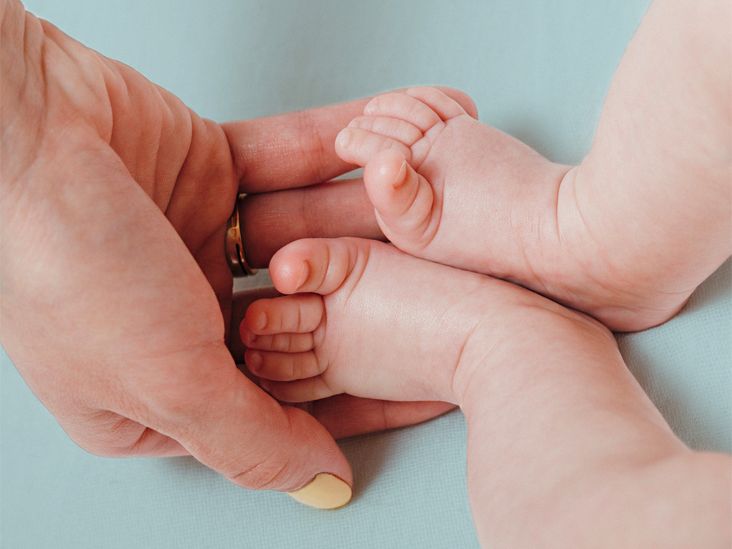Understanding Primitive Reflexes: Their Importance and Functions

Understanding Primitive Reflexes: Their Importance and Functions
From the moment your baby arrives in the world, you’ll start to notice their primitive reflexes, even if you don’t recognize them by name. These reflexes evoke a sense of awe, especially when you experience the strong grasp of your newborn's tiny fingers around your pinky. While these actions may seem instinctual, they play a vital role in the survival and development of your baby during their early months.
Primitive reflexes, also referred to as neonatal reflexes, are involuntary movements produced by the central nervous system (CNS)—the brain and spinal cord—triggering specific muscle responses. By the time your baby is between 4 to 6 months old, these automatic movements will typically transition to more voluntary actions. Below, we outline several key primitive reflexes you can observe in your newborn.
1. The Palmar Grasp Reflex
The palmar grasp reflex is often among the first reflexes you may notice. When you place your pinky in your baby's hand, they will instinctively close their fingers around it. This grasp is remarkably strong, allowing them to hold on even when you gently pull away. This reflex usually fades between 5 to 6 months of age.
Tip: Place your baby on a safe, flat surface and gently offer your pinky to see this reflex in action. Just be cautious, as they might let go unexpectedly when they get tired!
2. The Plantar Reflex
Similar to the palmar grasp reflex, the plantar reflex, or extensor plantar reflex in infants, can be observed at birth. When you stroke the underside of your baby's foot, you’ll notice their big toe flexing upward and outward, often accompanied by a similar reaction from the other toes—a phenomenon known as the Babinski sign. This reflex typically remains until around 1 to 2 years of age, evolving into a normal plantar reflex where the toes curl downward as the child grows.
3. The Sucking Reflex
Immediately noticeable after birth, the sucking reflex plays a crucial role in your baby's ability to feed and survive. If you place a clean nipple or your fingertip in their mouth, they will instinctively begin to suck rhythmically. This reflex begins in the womb and is vital for coordinating breathing and swallowing. By 2 months, your baby will start to control this reflex more consciously.
4. The Rooting Reflex
The rooting reflex aids newborns in finding food. When you gently touch your baby's cheek, they will instinctively turn their head toward the stimulus, looking for a nipple. This behavior is particularly beneficial for breastfeeding infants. Typically, this reflex diminishes by around 4 months as the baby becomes more aware and coordinated.
5. The Galant Reflex
The Galant reflex can be seen in newborns when the skin along the side of their back is stroked, causing them to shift toward the side of the contact. This reflex is key for developing hip range of motion necessary for crawling and walking. It usually disappears by 4 to 6 months.
6. The Moro (Startle) Reflex
The Moro reflex, or startle reflex, becomes apparent right after birth. Triggered by sudden movements or sounds, it can cause your baby to stretch out their limbs suddenly before bringing them back together. This reflex typically peaks at about 1 month and begins to fade by 2 months.
7. The Stepping Reflex
Even as a newborn, your baby can demonstrate a stepping reflex. When held upright and their feet touch a flat surface, they will instinctively attempt to walk by moving one foot in front of the other. This reflex typically disappears between 2 to 5 months old.
8. The Asymmetrical Tonic Neck Reflex (ATNR)
Present since birth, the ATNR can be observed when your baby turns their head to one side, causing the arm and leg on that side to extend while the opposite side bends. This reflex promotes hand-eye coordination and typically disappears by 3 months.
9. The Tonic Labyrinthine Reflex (TLR)
The TLR consists of two components—forward and backward. If you tilt your baby’s head forward while they are on their back, their arms and legs will curl in. Conversely, tilting their head back will cause their limbs to extend out. This reflex aids in helping your baby learn to straighten from the fetal position and usually disappears between 2 to 4 months.
10. The Symmetric Tonic Neck Reflex (STNR)
This reflex peaks between 6 to 9 months and appears when your baby’s head moves forward and their arms bend while their legs straighten, or vice versa. The STNR fosters independent movement between the upper and lower body, which is crucial for crawling. This reflex will usually fade by the time your child reaches 1 to 2 years old.
Understanding Reflex Integration
Reflex integration refers to the process through which these primitive reflexes are replaced by more voluntary movements as your child’s CNS matures. A reflex that does not fully integrate may indicate an issue within the CNS, possibly affecting the child’s physical and cognitive skills.
Consequences of Retained Primitive Reflexes
In an ideal scenario, primitive reflexes diminish as your child grows older. If these reflexes remain, it can lead to difficulties with motor skills and cognitive functions, impacting activities like running, playing sports, or even maintaining attention. Research indicates that unintegrated reflexes can be linked to challenges such as ADHD. It is crucial to monitor their progression and seek guidance from a pediatrician if you have concerns.
What If Reflexes Reappear in Older Children or Adults?
Occasionally, primitive reflexes may reappear in older adults, often indicating neurological conditions. Research has linked retained reflexes to poor nutritional status and increased risk of illnesses in elderly populations.
The Final Thought
Tracking your child's developmental milestones can be an exciting journey. If you suspect that your child may still be exhibiting primitive reflexes beyond their expected time frame, consult with your pediatrician to facilitate a healthy developmental path towards toddlerhood.
